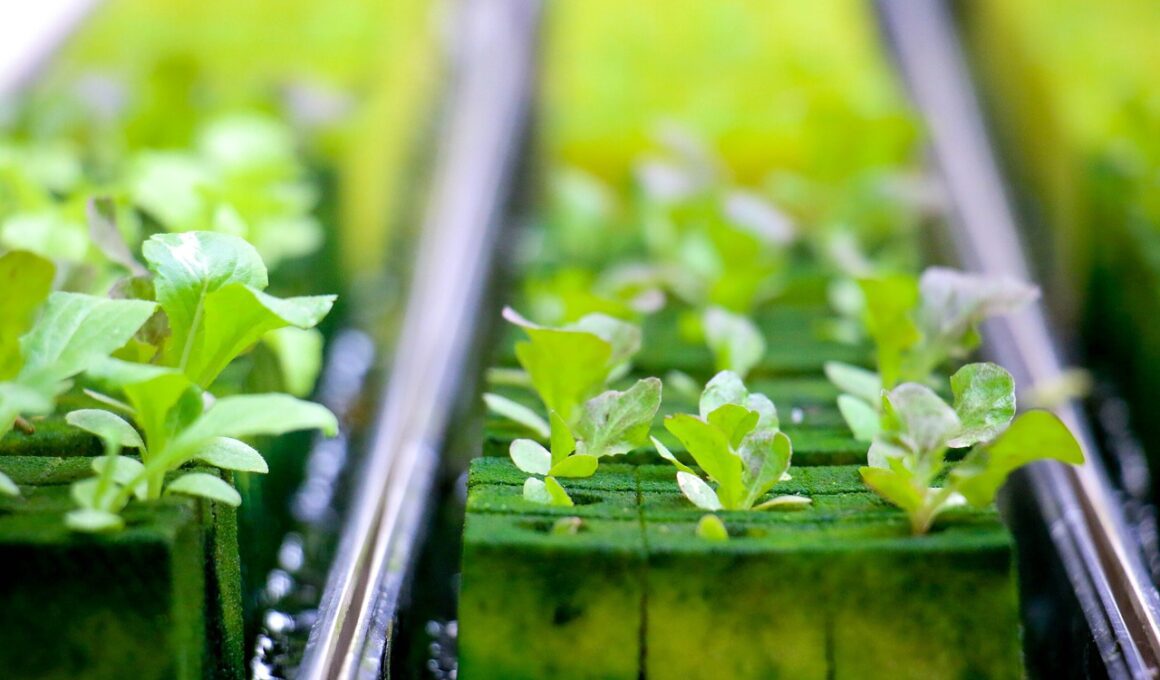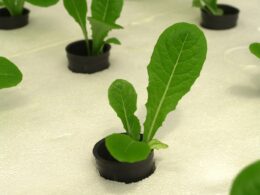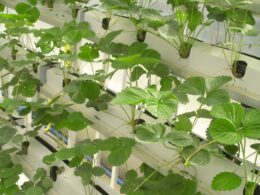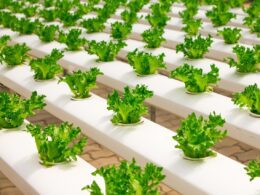If you’re interested in growing your own vegetables but don’t have access to a lot of outdoor space, hydroponics may be the solution for you. Hydroponic systems allow you to grow plants using water and nutrients instead of soil, which means you can grow a variety of vegetables indoors or in a small outdoor space.
But which vegetables are best suited for this type of growing system? In this article, we’ll explore some of the top vegetables that thrive in hydroponic systems so you can start growing your own fresh produce at home.
Not only does hydroponic gardening offer a space-saving solution for growing your own vegetables, but it also has the added benefit of being a safe and sustainable way to grow food. With hydroponics, you have complete control over the growing environment, which means you can avoid using pesticides and other harmful chemicals.
Plus, because the plants are grown in a controlled environment, you can grow vegetables year-round without worrying about weather conditions or pests. So, whether you’re an experienced gardener or just starting out, hydroponics may be the perfect way to grow fresh, healthy vegetables right in your own home.
Leafy Greens
You’ll love how easy it is to grow delicious and nutrient-packed leafy greens in your hydroponic setup. Indoor farming is a great way to grow fresh greens all year round without worrying about pests, weather, or soil quality.
Leafy greens such as spinach, lettuce, and kale are some of the best vegetables suited for hydroponic growing. In a hydroponic system, the plants are grown in nutrient solutions instead of soil. This means that the plants get all the nutrients they need directly from the water.
Leafy greens are particularly well-suited for this type of growing because they have shallow roots and don’t need a lot of space to grow. With a hydroponic setup, you can easily adjust the nutrient solution to provide the perfect balance of nutrients for your plants.
Growing leafy greens in a hydroponic system is not only easy but also incredibly rewarding. You’ll be able to harvest fresh greens all year round and enjoy the taste of nutrient-packed produce that you’ve grown yourself. Plus, with a hydroponic setup, you’ll be able to control the growing conditions to ensure that your plants are healthy and thriving.
So why not give it a try and start growing your own leafy greens today?
Tomatoes
Tomatoes are a prime candidate for cultivation in a hydroponic setup. They’re known for their high yield and fast growth rate, making them a popular choice for hydroponic farmers.
Growing tomatoes in a hydroponic system allows for greater control over the plant’s environment, including temperature, light, and water. This means that farmers can optimize growing techniques to produce the best-quality tomatoes possible.
When it comes to nutrient requirements, tomatoes need a balanced mix of macronutrients and micronutrients to grow successfully. Hydroponic systems are designed to provide these nutrients in a controlled manner, allowing for optimal growth and fruit production. Farmers can adjust the nutrient solution to meet the specific needs of their tomato plants, ensuring they have everything they need to thrive.
In addition to their growth potential and nutrient requirements, tomatoes are also a popular choice for hydroponic farmers due to their versatility. They can be grown in a variety of hydroponic setups, including nutrient film technique (NFT), deep water culture (DWC), and drip irrigation systems. This means that farmers can choose a growing method that best suits their needs and the space they have available.
With proper care and attention, hydroponic tomatoes can produce a bountiful harvest that’s sure to impress.
Is it Possible to Grow All Types of Vegetables Using Hydroponics?
Hydroponics, a soilless cultivation technique, offers great versatility for growing various vegetables. However, there are certain unsuitable vegetables for hydroponics. Root crops like carrots and potatoes require deep soil for proper development, making them challenging to grow in hydroponic systems. Similarly, large fruiting plants such as watermelons or pumpkins demand extensive space and support, rendering them less suitable for hydroponics. Nonetheless, a wide range of vegetables, including leafy greens, tomatoes, cucumbers, and herbs, thrive exceptionally well in hydroponic setups.
Cucumbers
If you’re looking to expand your hydroponic crop options, cucumbers offer a great choice for their versatility and potential yield. They’re easy to grow, and with the right care and optimal growing conditions, you can produce a bountiful harvest.
Cucumbers thrive in a warm environment with plenty of light, so make sure to keep your hydroponic system at a temperature between 70-80°F and provide a minimum of 12 hours of light daily.
To achieve the best results, monitor the nutrient levels in your hydroponic system regularly and adjust as needed. Cucumbers are heavy feeders, so make sure to provide them with ample nutrients, especially nitrogen, phosphorus, and potassium. You can also use trellises or stakes to support the cucumber vines and reduce space usage.
When it comes to harvesting techniques, cucumbers are ready to be picked when they reach their full size and have a firm skin. It’s essential to harvest them regularly to promote new growth and prevent over-ripening.
Once harvested, cucumbers can be stored in a cool, dry place for several days or in the refrigerator for up to a week. With these tips and tricks, you can successfully grow cucumbers in your hydroponic system and enjoy a fresh, healthy crop all year round.
Peppers
Get ready to spice up your hydroponic garden with some delicious peppers! Growing peppers hydroponically is a great way to ensure they receive the optimal nutrient solutions they need to thrive.
Not only do peppers add a flavorful kick to your meals, but they’re also packed with vitamins and antioxidants.
To grow peppers hydroponically, you’ll need to select a variety that’s suited for this type of system. Some popular options include bell peppers, jalapeños, and habaneros. When selecting your seeds, make sure to choose ones that’re disease-resistant and have a high yield potential.
To ensure your peppers grow strong and healthy, it’s important to provide them with the proper nutrient solutions. Peppers are heavy feeders and require a well-balanced mix of nitrogen, phosphorus, and potassium. You can also add calcium and magnesium to help prevent blossom end rot and boost overall plant health.
In addition to proper nutrition, peppers also need adequate light and temperature control. They thrive in warm environments with plenty of sunlight, so make sure to place your hydroponic system in a location that receives at least 6 hours of direct sunlight each day.
With the right care and attention, your hydroponic pepper plants will produce a bountiful harvest of spicy, flavorful peppers that’ll add a delicious kick to your meals.
Root Vegetables
If you’re considering growing root vegetables in your hydroponic system, there are a few unique challenges you should be aware of. Some root vegetables can be more difficult to grow without soil and may require special care and attention. However, with the right variety selection and proper care, root vegetables can thrive in a hydroponic system and provide a delicious and healthy harvest.
Unique Challenges of Growing Root Vegetables Hydroponically
Growing root veggies in a hydroponic setup presents its own set of challenges. While it’s possible to grow root vegetables such as carrots, radishes, and beets hydroponically, it requires a bit more effort compared to growing other types of vegetables.
Here are some unique challenges you may encounter when growing root vegetables hydroponically:
-
Nutrient solutions: Root vegetables require a different set of nutrients compared to leafy greens and herbs. You may need to adjust the nutrient solution to meet the specific needs of root vegetables.
-
Substrate options: Root vegetables need enough space to grow and develop their roots. Choosing the right substrate such as coconut coir or vermiculite is crucial to ensure that the roots have enough room to grow.
-
pH levels: Root vegetables are sensitive to changes in pH levels. You need to monitor the pH levels of the nutrient solution regularly to ensure that it stays within the ideal range.
-
Watering: Overwatering or underwatering the plants can affect the growth and development of root vegetables. You need to ensure that the plants receive the right amount of water.
-
Lighting: Root vegetables require a lot of light to grow properly. You may need to invest in high-quality grow lights to provide enough light for the plants.
Overall, growing root vegetables hydroponically requires a bit more attention to detail compared to other types of vegetables. However, with the right substrate, nutrient solution, and lighting, you can successfully grow healthy and delicious root vegetables in your hydroponic setup.
Best Varieties to Grow
Let’s explore the top varieties of root veggies that thrive in a hydroponic environment and can add a burst of color and flavor to your palate.
First on the list is the classic carrot. Carrots don’t require much space to grow and are relatively easy to maintain, making them a great choice for beginners. When growing carrots in a hydroponic system, it’s important to use a deep container to accommodate their long roots. You’ll also need to monitor their nutrient requirements closely, as they need a balanced diet of nitrogen, phosphorus, and potassium.
Next up is the beetroot, which is known for its deep red color and earthy flavor. Growing beets hydroponically requires a bit more attention than carrots, as they need a suitable growing medium such as coconut coir or perlite. Beets also require a consistent supply of water, so make sure your hydroponic system is well-maintained. As for their nutrient requirements, beets need a balanced mix of macronutrients and micronutrients.
With the right growing techniques and nutrient requirements, both carrots and beets can thrive in a hydroponic system and provide a tasty addition to your meals.
Caring for Root Vegetables in a Hydroponic System
Taking care of root veggies in a hydroponic setup is crucial for their growth and flavor, so let’s dive into some tips and tricks to keep your plants healthy and thriving.
One important factor is maintaining optimal nutrient ratios. Root vegetables like carrots and beets require a balanced blend of macro and micronutrients to grow properly. It’s essential to monitor the nutrient solution levels regularly and adjust accordingly to avoid under or overfeeding your plants.
Another key aspect of caring for root vegetables in a hydroponic system is preventing root rot. This fungal disease can quickly spread and damage the entire crop. To avoid root rot, ensure that your plants have proper drainage and aren’t sitting in stagnant water. Additionally, keep the water temperature between 65-75°F and maintain a pH level of 5.5-6.5.
By following these tips, you can help your root vegetables thrive and produce a bountiful harvest.
Frequently Asked Questions
What types of hydroponic systems are best suited for growing vegetables?
Looking to start indoor farming? Vertical gardening may be the perfect solution for you. This type of hydroponic system is best suited for growing vegetables that have shallow roots, such as lettuce, spinach, and herbs.
The benefit of growing in a vertical garden is that it allows for more efficient use of space, making it a great option for those who have limited room for a traditional garden. Plus, with the controlled environment of a hydroponic system, you can grow fresh and healthy produce all year round.
So, whether you’re looking to start a new hobby or just want to have access to fresh vegetables, a vertical garden is a great option for indoor farming.
How do you control pests and diseases in a hydroponic system?
Controlling pests and diseases in a hydroponic system is crucial for the health and success of your plants. One effective method is using natural pest control, such as introducing beneficial insects or using neem oil.
Additionally, maintaining the proper pH levels in your hydroponic system is important for preventing disease growth. Regularly testing and adjusting your pH levels can help keep your plants healthy and strong.
By implementing these practices, you can protect your plants and ensure a thriving hydroponic system.
Can you grow vegetables hydroponically without any soil or growing medium?
If you’re considering hydroponic vegetable farming, you’ll be glad to know that this method has many benefits. With hydroponics, you don’t need soil or a growing medium, which means you can grow vegetables almost anywhere. This can be a game-changer for those living in urban areas with limited space.
Additionally, hydroponics uses less water and fertilizer compared to traditional farming methods, making it a more sustainable option. However, there are also some cons to soilless vegetable cultivation. It can be more expensive to set up and maintain a hydroponic system, and there’s a higher risk of equipment failure.
The absence of soil can also make it more challenging to control pests and diseases. Overall, hydroponic vegetable farming can be a great option for those looking for a sustainable, space-saving method of growing produce.
How much maintenance is required to maintain a hydroponic system?
Maintaining a hydroponic system requires some effort, but there are tips you can follow to make it easier. One of the best ways to automate maintenance is to invest in a timer for your irrigation system. This will ensure that your plants receive consistent watering without you having to constantly check on them.
Another tip is to regularly test the pH and nutrient levels of your water. This will help you catch any imbalances before they harm your plants. When it comes to avoiding mistakes, make sure to clean your system regularly to prevent the buildup of algae or other contaminants.
Additionally, be cautious when adding new plants to your system, as they can introduce pests or diseases. By following these tips, you can keep your hydroponic system healthy and thriving.
Does the nutrient solution need to be changed frequently in a hydroponic system?
Maintaining the right nutrient balance in a hydroponic system is key to healthy and productive plants. The frequency of nutrient changes will depend on the type of plants being grown and the size of the system.
Some experts recommend changing the nutrient solution every two weeks, while others suggest doing it weekly. The frequency of changes can impact plant growth, as a lack of nutrients can stunt growth, while too much can lead to nutrient burn.
It’s important to monitor the nutrient levels regularly and make adjustments as needed. Overall, frequent nutrient changes are essential for successful hydroponic gardening.
Conclusion
So there you have it! When it comes to growing vegetables in a hydroponic system, leafy greens, tomatoes, cucumbers, peppers, and root vegetables are all great options.
Whether you’re a seasoned gardener looking to try something new or a beginner just starting out, hydroponics can be a fun and rewarding way to grow your own fresh produce.
Not only do hydroponic systems allow you to grow vegetables in a controlled environment, but they also use less water and space than traditional soil gardening.
So why not give it a shot and see what delicious vegetables you can grow in your very own hydroponic system? Happy gardening!









